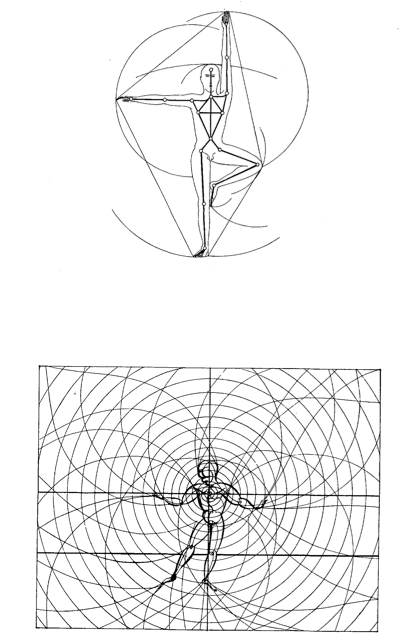In the past week my research was inspired by the Bauhaus notion of gesamtkunstwerk (total work) which emerged from my subconscious or art and architecture history; I was surprised that this inspiring and relevant precedent did not appear at earlier stage. The Bauhaus had an organic synergetic approach to design and the gesamtkunstwerk included architecture, visual and performing arts, as well as crafts. The concept is best expressed in Walter Gropius' introduction to Die Bühne im Bauhaus (The Theatre of the Bauhaus) by Oskar Schlemmer, László Moholy-Nagy, Farkas Molnár:
...the Bauhaus embraced the whole range of visual arts: architecture, planning, painting, sculpture, industrial design, and stage work. The aim of the Bauhaus was to find a new and power- ful working correlation of all the processes of artistic creation to culminate finally in a new cultural equilibrium of our visual environment. This could not be achieved by individual withdrawal into an ivory tower. Teachers and students as a working community had to become vital participants of the modern world, seeking a new synthesis of art and modern technology. Based on the study of the biological facts of human perception, the phenomena of form and space were investigated in a spirit of unbiased curiosity, to arrive at objective means with which to relate individual creative effort to a common background.
...man remains perforce our essential element. And of course he will remain so as long as the stage exists. In contradistinction to the rationalistically determined world of space, form, and color, man is the vessel of the subconscious, the unmediated experi- ence, and the transcendental. He is the organism of flesh and blood, con- ditioned by measure and by time. And he is the herald, indeed he is the creator, of possibly the most important element of theater: SOUND, WORD, LANGUAGE.
Costumes are body extensions to space and create forms which integrate both. The 1922 "Triadisches Ballett" is probably the most inspiring work: geometry informs both the human body and pattern of movement:
Text excerpts and images from:
Schlemmer, Oskar, L. Moholy-Nagy, and F. Molnar. "The Theatre of the Bauhaus (Middletown, Conn." (1961).




